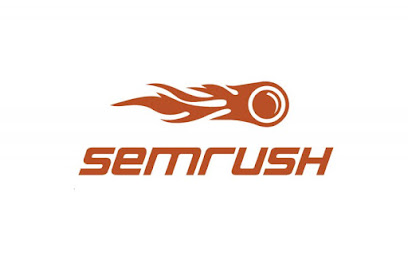SEO 101: Stumbling my way through SEMrush so you don't have to
Search Engine Optimization is one of the keys to success for any business operating in the digital era. How you rank within organic search engine results page (SERP) impacts how many prospects will cross paths with your business and click through your site. In today's post, we will talk about the basics of SEO and how tools like SEMrush can help improve your ranking.
In a digital economy where organic search is still king, Search Engine Optimization (SEO) is a vital part of digital marketing, but it is composed of several unique yet equally important components and can leave newbies feeling 'lost in the sauce' as they try to implement it in their marketing strategy. As someone who is new to the SEO and SEMrush world herself, I can attest to that previous statement. If you're new too, WELCOME--I hope we can navigate this together!
But as always, before we dive deeper, let's first go back to basics...
What is SEO?
Search Engine Optimization is "the practice of increasing the quantity and quality of traffic to your website through organic search engine results" (Moz, 2021).
To further clarify, the purpose of SEO is to increase the overall traffic your site receives while simultaneously working to attract prospects who are actually interested in your product or service through increased organic visibility on SERPs. "The more effective your SEO efforts, the higher your ranking and the better your visibility, which is especially important when you consider that a quarter of web users never click past the first SERP" (Digital Marketing Institute, 2018).
Additionally, good SEO boots your site's authority as a trustworthy, relevant, high-quality site, and can help you provide a better experience to your site's visitors.
It should be noted that SEO focuses on the "organic" search, which simply means that you do not have to pay for your results, unlike the ads that are featured at the top of most search engine queries.
While best practices are constantly evolving, investing in good SEO is a long-term strategy for brands to uncover new opportunities and see quantifiable growth (Hollingsworth, 2018).
SEMrush for SEO:
Initial Thoughts...
I recently started learning about SEMrush through my master's program at West Virginia University, and at first, felt very out of my element. Once I took time to start playing with the capabilities of the platform (and after watching about 20 different YouTube videos) it started to become less daunting.
To best demonstrate the functionality of SEMrush, allow me to walk you through a starter project I have been working on for my father's small business:
Site Audit:
The site audit feature is a great resource for analyzing the overall health of your company's website.
As you can see, cardel-criste.com has a really good overall site health. According to the dashboard, the Top 10% of websites average about 92% health, and websites in the industrial segment usually average 77% health. Generally speaking, 91% performance is great compared against those numbers especially considering this company has previously never utilized any SEO strategies, but as you can see from the dashboard below, there is still room for improvement, especially in regard to the Core Web Vitals section.
Core Web Vitals:
Although this tool is still in Beta testing, this showed that there is high Cumulative Layout Shift, which "is an important, user-centric metric for measuring visual stability because it helps quantify how often users experience unexpected layout shifts" while the page is loading (Walton, 2020).
The ideal range for CLS is between 0 - 0.10 , and anything greater than 0.25 is deemed critical.
According to Osmani (2020), the most common causes of poor CLS are:
- Images without dimensions
- Ads, embeds, and iframes without dimensions
- Dynamically injected content
- Web Fonts causing FOIT/FOUT
- Actions waiting for a network response before updating DOM
Although CLS problems are usually more annoying than functionally problematic, unexpected shifts can be frustrating to site visitors, and ultimately impact your SEO ranking.
As I continued to work my way through the site, one feature that caught my attention was the Competitive Research Toolkit...
Competitive Research Toolkit:
SEMrush's Competitive Research Toolkit
For this company, the products and services offered target a very niche audience with tight competition. SEMrush makes it easy to analyze what is working for your competitors, and adjust your strategy accordingly.
Functions of this toolkit include:
- Traffic Analytics
- Niche Market Explorer
- Organic Search
- Keyword and Backlink Gaps
- PPC Strategy
and so much more.
Because it allows us to see such a broad scope of the components of competitors' strategies, it is taking some time to fully understand how to use each part of the toolkit. However, this is one of the most interesting and valuable capabilities of SEMrush and I look forward to exploring it further.
As Guy Kawasaki once said, "You have to start with the basic premise that you need to know what your competition is doing."
References:
Digital Marketing Institute (25 August 2018). What is SEO & Why is it Important? Retrieved April 11, 2021, from https://digitalmarketinginstitute.com/blog/what-is-seo-and-why-is-it-important
Hollingsworth, S. (10 April 2018). 12 Reasons Why Your Business Absolutely Needs SEO. Retrieved on April 11, 2021, from https://www.searchenginejournal.com/why-seo-is-important-for-business/248101/
Moz (2021). What is SEO? Retrieved on April 11, 2021, from https://moz.com/learn/seo/what-is-seo
Osmani, A. (20 August 2020). Optimize Cumulative Layout Shift. Retrieved April 11, 2021, from https://web.dev/optimize-cls/
SEMrush (2021). https://semrush.com
Walton, P. (9 October 2020). Cumulative Layout Shift (CLS). Retrieved April 11, 2021, from https://web.dev/cls/








Hi Maggie,
ReplyDeleteI loved how you focused on the basic of SEO, as most people need a starting place. Explaining the benefits of SEO are important because they increase your website's credibility and make the customer more trusting with the higher rankings on the SERP. Google uses the algorithm of E-A-T (Expertise-Authoritativeness-Trustworthiness) to provide high quality and relevant search results (Kalyadina, 2020). Some ways to do this include link building, content marketing, guest blogging, targeting mobile devices, personalization, and social media marketing (Kalyadina, 2020). These are all tools available in SEMrush.
One of my favorite SEMrush features is the Keyword Gap tool. Being able to compare keywords with high-ranking competitors is important to a business and shows you exactly what keywords should be included on your page. For your dad's business, I think this would be great to compete with large, established companies.
Best regards,
Ben Massouras
References:
Kalyadina, M. (2020, November 25). Ways to build expertise, authority, and trust to boost your SEO. Semrush Blog. https://www.semrush.com/blog/ways-build-expertise-authority-trust-boost-seo-semrushchat-sherry-bonelli/